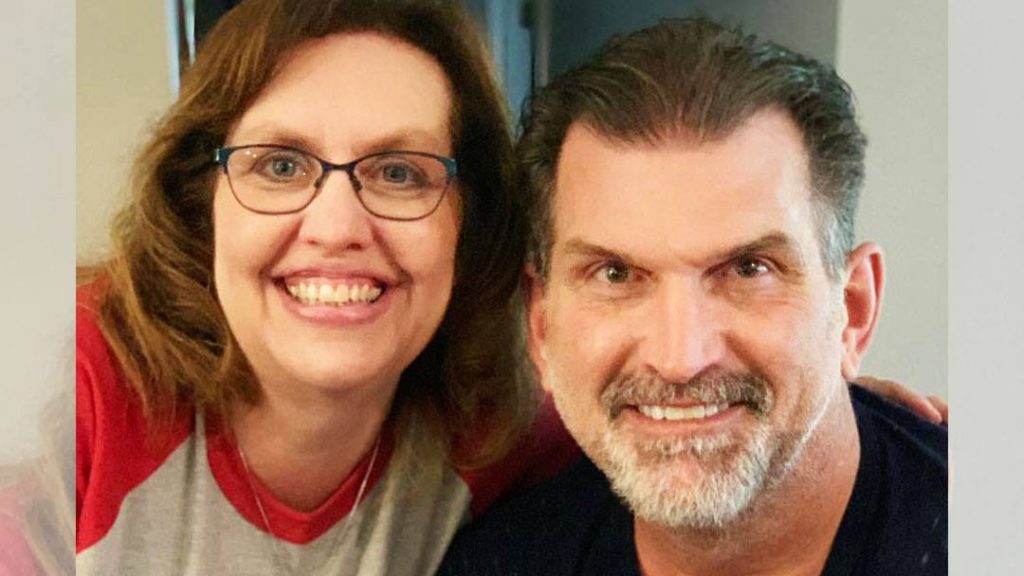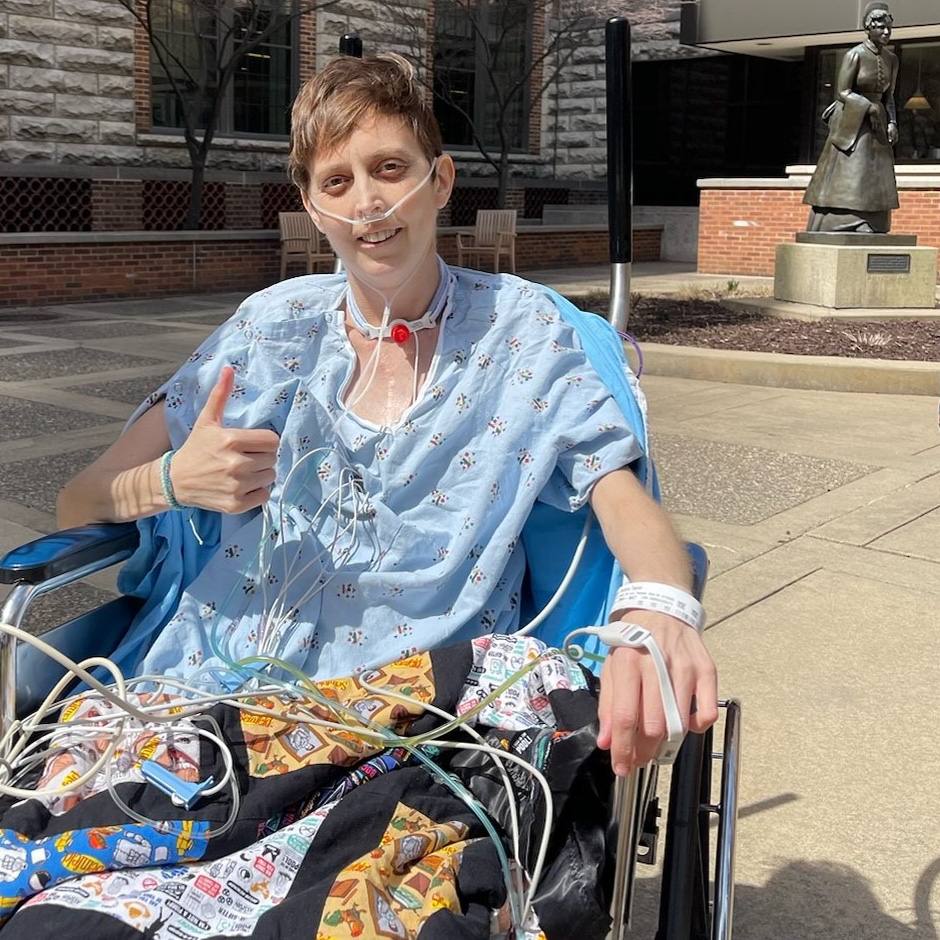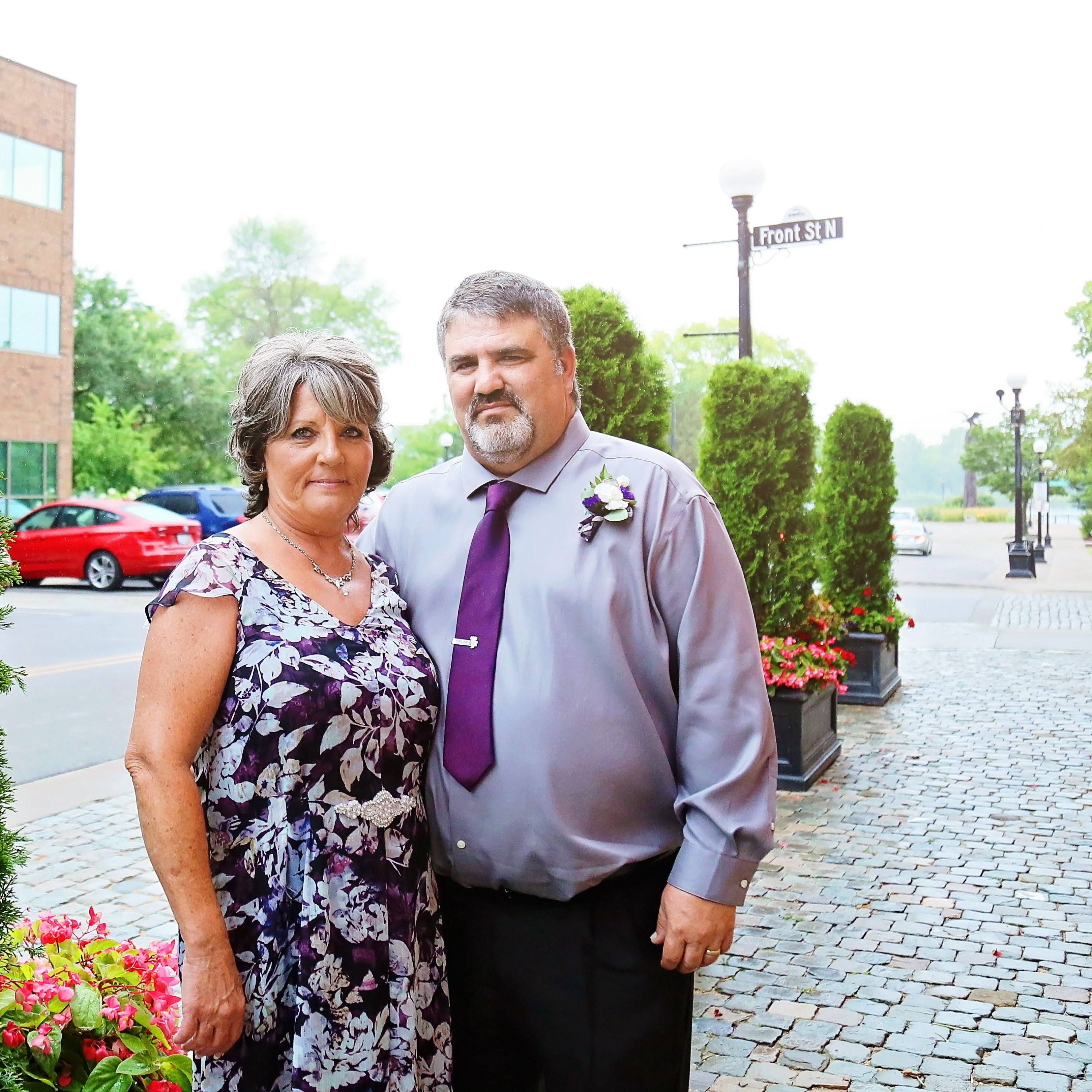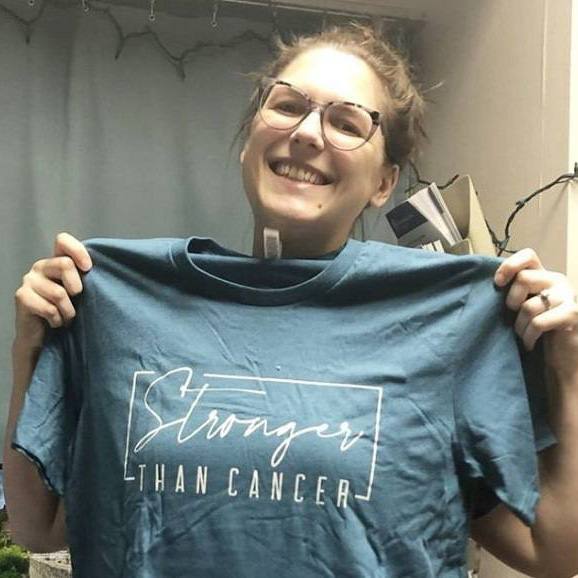-
Sharing Mayo Clinic
Living and Thriving Beyond Opioid Addiction

Ken Start is an optimistic, energetic husband, father and grandfather with a job and family he loves. It's a life Ken's fought for, but one he almost sacrificed to opioid addiction. For 15 years, Ken was addicted to prescription pain medication, an addiction that was finally broken with the help of Mayo Clinic's Pain Rehabilitation Program and Addiction Services.
Not long ago, Ken Start began a speech to a roomful of physicians by saying, "I am your worst nightmare, the guy you do not want in your waiting room."
Ken said the words jokingly, but behind the remark was a painful truth. For 15 years, Ken struggled against a crippling opioid addiction that developed after he received prescription pain relievers for spinal injuries from a car accident. Through the years, Ken lied to and manipulated his family, friends and physicians to feed his addiction.
But in 2004, Ken's life changed course when he arrived at Mayo Clinic. Distraught and near suicidal, Ken's trip to Mayo was a last-ditch effort to save himself and the life he'd built with his family. At Mayo Clinic, Ken met W. Michael Hooten, M.D., in Pain Medicine. "The morning Dr. Hooten walked in, that's the day my life changed," Ken said.
Change did not come easily for Ken, however, nor did it come quickly. But with Dr. Hooten's support, Ken entered Mayo Clinic's Pain Rehabilitation Center, where he was weaned off pain medication. Then in 2007, Ken returned to the program after relapsing. This time, pain rehabilitation was followed by treatment in Mayo Clinic's Addiction Services Program.
Finishing that program marked the start of a new chapter in Ken's life — one defined by sobriety, mindfulness, and a desire to shed light on an addiction epidemic blind to age, race, color or wealth.
"Most of the people I meet don't know what I've been through," says Ken, who's been sober for 12 years, speaks regularly about his journey and has written a book about his experience. "I don't appear to be an addict. We are not out there living under bridges. We are elders in the church. We are students. We are everywhere."
Immediate addiction
Growing up in a Dutch Reformed faith tradition in the small community of Fruitport in Muskegon County, Michigan, Ken wasn't exposed to drugs or alcohol. Even as a young man, he rarely drank.
But after just one dose of the opioid Vicodin, Ken was hooked. "Not only did I love the pain relief from the Vicodin, I loved the feeling it gave me," Ken says. "I'd never felt like that before. Things went down so fast and severely. By the following year, I was in my first rehab."
Like most of the drugs Ken took, the Vicodin prescription came legally from a physician following a 1991 car accident that fractured Ken's lumbar vertebra. The relative ease and legality of getting prescriptions allowed Ken's growing dependency to increase unchecked.
"Before I left my first orthopedic surgeon to go to the next guy, I'd started looking up pills in books," says Ken, who'd bought a prescription guide to find stronger medications.
After surgery to repair the damage from his accident, Ken began physical therapy. Although the therapy was intended to help with his pain, Ken recognized that reporting less pain equated to a decrease in medications, so he lied to receive stronger drugs.
"I broke my parents' heart. My wife, I broke her heart."
Ken Start
By fall 1992, Ken was in crisis. High on drugs all of the time, he was oblivious to the damage he was causing his family. "They had no idea what to do. This was back when opiates were supposed to be this miracle thing, and we didn't see them with as much danger as we do now," Ken says. "I broke my parents' heart. My wife, I broke her heart."
After one particularly hard night, which devolved into angry words and tears, his family took Ken to a mental health facility hoping he could clean up. There would be five more attempts at rehabilitation throughout the next 12 years before Ken found his way to Mayo Clinic. "Mayo was the final and best miracle," Ken says.
Intense, multifaceted approach
At Mayo Clinic, Dr. Hooten offered Ken a lifeline. "He was with me a very long time," Ken recalls. "He said, 'If I can make the plan for you, will you take it?' Something hit me that day, and it was God's grace."
Ken's clinicians in the Pain Rehabilitation Center quickly recognized the severity of his problem, Dr. Hooten says. "He clearly had an indication for pain management. But at the same time, he had an overlying opioid use disorder."
Under normal circumstances, kicking an opioid habit is extremely difficult. For opioid addicts with chronic pain, quitting is even harder because when they stop using opioids, the drug's pleasurable, mind-altering effects and the pain-relieving benefits go away. "It's doubly difficult for individuals with chronic pain to stop using opioids," Dr. Hooten says.
During the three-week outpatient pain rehabilitation program, patients learn behavior-based interventions, including exercise and occupational therapy. They also become familiar with cognitive-behavioral interventions, which are mental tactics to help manage pain, and related anxiety and depression. "Patients learn how to develop nonpharmacological coping strategies, like distraction, mindfulness and relaxation training, which is very important," Dr. Hooten says.
Patients learn ways to eliminate pain behaviors, which are nonverbal cues, such as grimacing, that convey pain or distress to others. While pain behaviors are vital for survival, they can become a powerful way for those dealing with chronic pain to influence how they are perceived and treated.
Ken successfully weaned himself off drugs during the program. "I did exactly what Dr. Hooten told me to do, and he got me through the first three weeks," Ken says. When he left the program, Ken says he felt terrible. But he was clean.
Recovery after relapse
Back at home, Ken stuck to Dr. Hooten's recommendations and stayed sober. "Everything was going pretty good," says Ken, adding that once he was off drugs, his pain decreased significantly. "With my doctor's help here, I started going to 12-step meetings. I started working full time. I was doing presentations and had a good sobriety going."
Then two years later, during a wedding reception, Ken slipped on some ice and fell. He broke the spinal cord stimulator he'd had implanted years earlier. Surgery to remove the device resulted in Ken acquiring a drug-resistant infection. Treating the infection required another surgery, another hospitalization and the reintroduction of opioids. "My mind went right back to it, right where I was before. I fell hard," Ken says.
Ken went back to work, but he did so under the influence of pills, as well as alcohol, which he stashed in his office. His boss took note and said he couldn't work there unless he cleaned up. Ken attended an evening rehabilitation program close to home, but it failed. By summer 2007, Ken was in free fall, and he reached out to Dr. Hooten. "I'm one of those students who didn't catch on fast enough," Ken says.
Relapse, says Dr. Hooten, is a common problem with addiction and recovery. "Of course he relapsed," Dr. Hooten says, reflecting on Ken's situation. "He was continuing to use and was using quite a bit of alcohol with the opioids, which is very dangerous."
"I bought into recovery, and I've been there ever since."
Ken Start
Ken returned to the Pain Rehabilitation Center and completed the program once more. After he finished, he stayed at Mayo Clinic to continue his treatment in Addiction Services. But maintaining sobriety was a challenge. One evening, Ken met up with another patient, and they walked to a grocery store where they purchased cans of aerosolized whipped cream and balloons. Soon Ken was high on the fumes.
"The next day, Tom, my addiction counselor — what an angel he was — took me into the hallway and said, 'We really don't think you're taking this seriously, and if you're not going to buy into this, maybe you should exit the program and go back home.' And I said, 'That's fine. I'll go back home.'"
It turned out that wasn't an option. Ken's wife took a stand and told him that if he wasn't going to try, he couldn't come home. So Ken stayed. He found a sponsor. He began working the 12 steps of his program once more. "I bought into recovery, and I've been there ever since," Ken says.
Relationships strengthen sobriety
Although the firm, yet compassionate care Ken received at Mayo Clinic was important, the most important factor in Ken's successful recovery, according to Dr. Hooten, was the support of Ken's wife, Sheryl. "If his wife would have left him — and she had ample reason to do so — his world would have collapsed," Dr. Hooten says. "She is one of the heroes in his story."
"The relationships I had with the staff made a huge difference."
Ken Start
The steadfastness of his wife was the lynchpin of Ken's recovery, but the people he met at Mayo Clinic also were instrumental to achieving sobriety. "The relationships I had with the staff made a huge difference," Ken says. "The people I met — the nurses, the advanced-practice nurses, the social workers — those people invested in me."
Ken continues to visit Dr. Hooten several times a year and, at Dr. Hooten's request, Ken has spoken to physician groups about his journey through addiction and recovery. "I still have accountability to him. I want to be successful, and I want to do well. And it helps to see his face," Ken says.
While Ken's years of sobriety have helped heal the wounds caused by his addiction, scars remain, he says. But knowing that he and his family survived the nightmare fills him with gratitude. "I've been in enough rehabs and have lost a lot of friends who have died to overdoses now," Ken says. "I have so much to be thankful for."
HELPFUL LINKS
- Learn more about opioid use disorder.
- Read about the Pain Rehabilitation Center.
- Check out Addiction Services.
- Connect with others talking about addiction and recovery on Mayo Clinic Connect.
- Explore Mayo Clinic.
- Request an appointment.
Related Articles







